
Winslow Homer Painting Reproductions 4 of 4
1836-1910
American Realist Painter
94 Winslow Homer Paintings
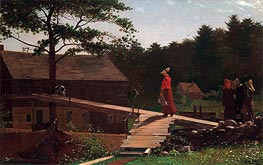
Old Mill (The Morning Bell) 1871
Oil Painting
$1203
$1203
Canvas Print
$61.76
$61.76
SKU: HOM-15802
Winslow Homer
Original Size: 61 x 96.8 cm
Yale University Art Gallery, Connecticut, USA
Winslow Homer
Original Size: 61 x 96.8 cm
Yale University Art Gallery, Connecticut, USA
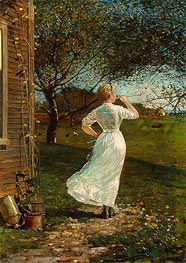
The Dinner Horn (Blowing the Horn at Seaside) 1870
Oil Painting
$1107
$1107
Canvas Print
$61.76
$61.76
SKU: HOM-15803
Winslow Homer
Original Size: 49 x 35 cm
National Gallery of Art, Washington, USA
Winslow Homer
Original Size: 49 x 35 cm
National Gallery of Art, Washington, USA
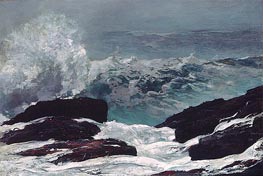
Maine Coast 1896
Oil Painting
$987
$987
Canvas Print
$62.63
$62.63
SKU: HOM-15804
Winslow Homer
Original Size: 76.2 x 101.6 cm
Metropolitan Museum of Art, New York, USA
Winslow Homer
Original Size: 76.2 x 101.6 cm
Metropolitan Museum of Art, New York, USA
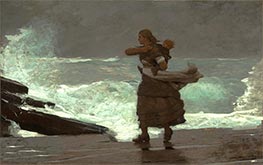
The Gale c.1883/93
Oil Painting
$1105
$1105
Canvas Print
$61.76
$61.76
SKU: HOM-15805
Winslow Homer
Original Size: 76.8 x 122.7 cm
Worcester Art Museum, Massachusetts, USA
Winslow Homer
Original Size: 76.8 x 122.7 cm
Worcester Art Museum, Massachusetts, USA
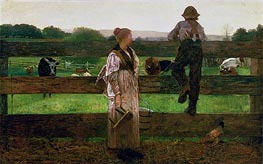
Milking Time 1875
Oil Painting
$1200
$1200
Canvas Print
$61.76
$61.76
SKU: HOM-15806
Winslow Homer
Original Size: 61 x 97 cm
Delaware Art Museum, Wilmington, USA
Winslow Homer
Original Size: 61 x 97 cm
Delaware Art Museum, Wilmington, USA
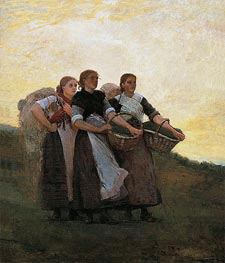
Hark! The Lark 1882
Oil Painting
$1348
$1348
Canvas Print
$79.49
$79.49
SKU: HOM-15807
Winslow Homer
Original Size: 92.4 x 79.7 cm
Milwaukee Art Museum, Wisconsin, USA
Winslow Homer
Original Size: 92.4 x 79.7 cm
Milwaukee Art Museum, Wisconsin, USA
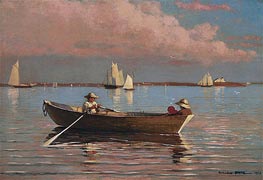
Gloucester Harbor 1873
Oil Painting
$722
$722
Canvas Print
$64.17
$64.17
SKU: HOM-15808
Winslow Homer
Original Size: 39.3 x 56.8 cm
Nelson-Atkins Museum of Art, Kansas City, USA
Winslow Homer
Original Size: 39.3 x 56.8 cm
Nelson-Atkins Museum of Art, Kansas City, USA
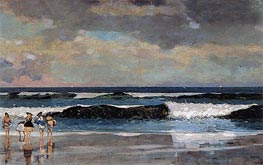
On the Beach 1869
Oil Painting
$859
$859
SKU: HOM-15809
Winslow Homer
Original Size: 40.6 x 63.5 cm
Public Collection
Winslow Homer
Original Size: 40.6 x 63.5 cm
Public Collection

Sparrow Hall c.1881/82
Oil Painting
$1103
$1103
Canvas Print
$64.17
$64.17
SKU: HOM-15810
Winslow Homer
Original Size: unknown
National Gallery of Art, Washington, USA
Winslow Homer
Original Size: unknown
National Gallery of Art, Washington, USA
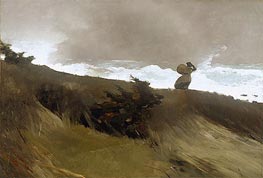
The West Wind The West W
Oil Painting
$876
$876
SKU: HOM-15811
Winslow Homer
Original Size: 76.2 x 111.7 cm
Addison Gallery of American Art, Andover, USA
Winslow Homer
Original Size: 76.2 x 111.7 cm
Addison Gallery of American Art, Andover, USA
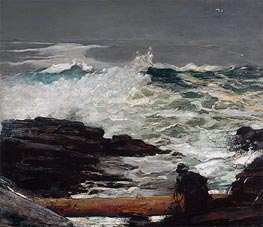
Driftwood 1909
Oil Painting
$981
$981
Canvas Print
$61.76
$61.76
SKU: HOM-15812
Winslow Homer
Original Size: 62.2 x 72.4 cm
Boston Museum of Fine Arts, Massachusetts, USA
Winslow Homer
Original Size: 62.2 x 72.4 cm
Boston Museum of Fine Arts, Massachusetts, USA

Twilight at Leeds, New York 1876
Oil Painting
$898
$898
SKU: HOM-15813
Winslow Homer
Original Size: 61.3 x 71 cm
Boston Museum of Fine Arts, Massachusetts, USA
Winslow Homer
Original Size: 61.3 x 71 cm
Boston Museum of Fine Arts, Massachusetts, USA
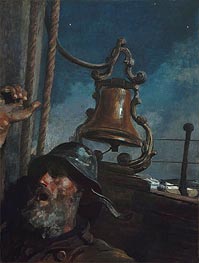
The Lookout - 'All's Well' 1896
Oil Painting
$1058
$1058
SKU: HOM-15814
Winslow Homer
Original Size: 101.3 x 76.5 cm
Boston Museum of Fine Arts, Massachusetts, USA
Winslow Homer
Original Size: 101.3 x 76.5 cm
Boston Museum of Fine Arts, Massachusetts, USA
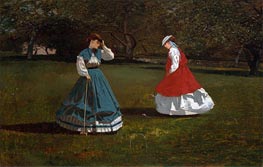
A Game of Croquet 1866
Oil Painting
$1103
$1103
Canvas Print
$61.76
$61.76
SKU: HOM-15815
Winslow Homer
Original Size: 60.3 x 87.9 cm
Yale University Art Gallery, Connecticut, USA
Winslow Homer
Original Size: 60.3 x 87.9 cm
Yale University Art Gallery, Connecticut, USA
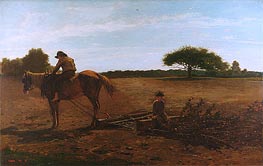
The Brush Harrow 1865
Oil Painting
$1173
$1173
Canvas Print
$61.76
$61.76
SKU: HOM-15816
Winslow Homer
Original Size: 61 x 96 cm
Fogg Art Museum at Harvard University, Massachusetts, USA
Winslow Homer
Original Size: 61 x 96 cm
Fogg Art Museum at Harvard University, Massachusetts, USA
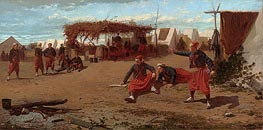
Pitching Quoits 1865
Oil Painting
$1279
$1279
Canvas Print
$61.76
$61.76
SKU: HOM-15817
Winslow Homer
Original Size: 68 x 136.5 cm
Fogg Art Museum at Harvard University, Massachusetts, USA
Winslow Homer
Original Size: 68 x 136.5 cm
Fogg Art Museum at Harvard University, Massachusetts, USA
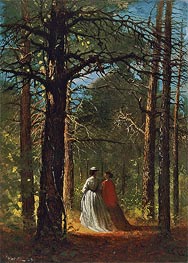
Waverly Oaks 1864
Oil Painting
$720
$720
Canvas Print
$61.76
$61.76
SKU: HOM-15818
Winslow Homer
Original Size: 33.6 x 25.4 cm
Thyssen-Bornemisza Museum, Madrid, Spain
Winslow Homer
Original Size: 33.6 x 25.4 cm
Thyssen-Bornemisza Museum, Madrid, Spain

Beach Scene c.1869
Oil Painting
$618
$618
Canvas Print
$61.76
$61.76
SKU: HOM-15819
Winslow Homer
Original Size: 29.3 x 24 cm
Thyssen-Bornemisza Museum, Madrid, Spain
Winslow Homer
Original Size: 29.3 x 24 cm
Thyssen-Bornemisza Museum, Madrid, Spain

Portrait of Helena de Kay c.1872
Oil Painting
$738
$738
Canvas Print
$61.76
$61.76
SKU: HOM-15820
Winslow Homer
Original Size: 31 x 47 cm
Thyssen-Bornemisza Museum, Madrid, Spain
Winslow Homer
Original Size: 31 x 47 cm
Thyssen-Bornemisza Museum, Madrid, Spain

The Signal of Distress 1890
Oil Painting
$1145
$1145
Canvas Print
$61.76
$61.76
SKU: HOM-15821
Winslow Homer
Original Size: 62 x 98 cm
Thyssen-Bornemisza Museum, Madrid, Spain
Winslow Homer
Original Size: 62 x 98 cm
Thyssen-Bornemisza Museum, Madrid, Spain
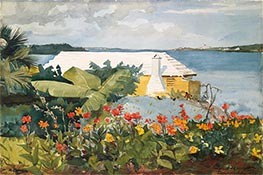
Flower Garden and Bungalow, Bermuda 1899
Paper Art Print
$58.49
$58.49
SKU: HOM-17832
Winslow Homer
Original Size: 35.4 x 53.2 cm
Metropolitan Museum of Art, New York, USA
Winslow Homer
Original Size: 35.4 x 53.2 cm
Metropolitan Museum of Art, New York, USA

Sunday Morning in Virginia 1877
Oil Painting
$1420
$1420
Canvas Print
$69.78
$69.78
SKU: HOM-19702
Winslow Homer
Original Size: 46.8 x 61 cm
Cincinnati Art Museum, Ohio, USA
Winslow Homer
Original Size: 46.8 x 61 cm
Cincinnati Art Museum, Ohio, USA